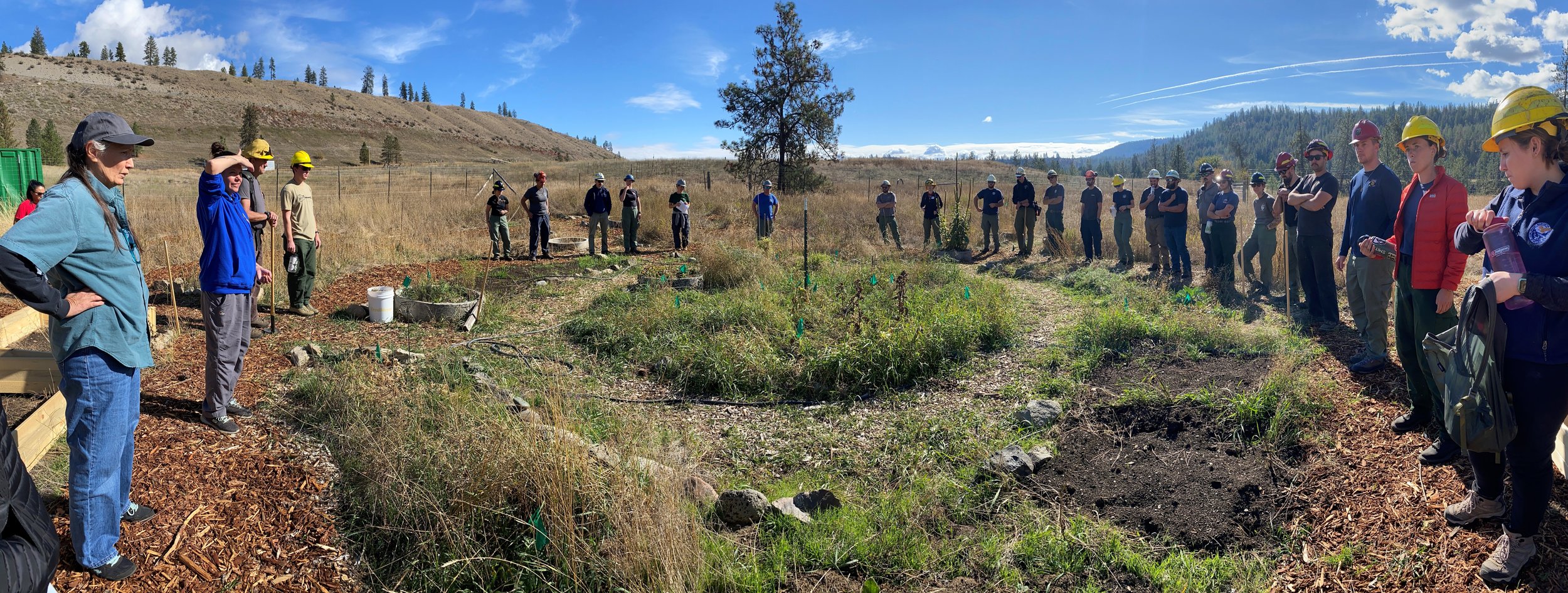Igniting Cultural Sovereignty: The Need for Tribal Collaboration While Conducting Prescribed Burns Throughout Washington State
By Claire Farber, Environmental Studies ‘26
October, 2023. Melodi Wynne and Lynette Pflueger briefing the Selkirk TREX participants during a field and cultural burn prep-work day at xx̣súl̓eʔxw ("a nice little place of good ground"), the Spokane Tribal Network food sovereignty demonstration site (Image credit: Kara Karboski, Washington Resource Conservation and Development Council).
Starting this April, Washington State will be set ablaze. However, unlike the wildfires plaguing the state in recent summers, these burns will be entirely intentional. Ever-increasing intensities and frequencies of wildfires across Central and Eastern Washington have sounded alarm bells throughout the state’s government. Large fires can severely threaten both ecological and human health, and compromise economic prosperity by damaging infrastructure and agricultural fields. To minimize these losses, the Washington State Department of Natural Resources (DNR) devised the 20-Year Forest Health Strategic Plan, an initiative that includes a Prescribed Fire Program (PFP) first conducted in 2021. The program implements annual controlled burns throughout regions consistently subjected to wildfires as means of mitigation. The Washington Department of Fish and Wildlife (WDFW) recently published their 2024 plan that includes prescribed burns spanning 2,580 acres. Although the PFP is a young initiative, the utilization of prescribed burns as means of wildfire mitigation is far from a novel concept.
Controlled burns are central to Indigenous science, utilized as a method of land management throughout millenia. On the surface, the process is simple: accumulated organic matter is intentionally set ablaze before it can act as kindling. However, the success of these burns primarily stems from the relational approach Indigenous peoples hold towards the natural world. Land management is inherently regional; a truth that Indigenous science readily acknowledges. For example, burn locations and intensities differ between the Yakima and Maka Nations––the regions have been shaped by drastically different anthropogenic and natural processes over time, therefore requiring distinct approaches. These complexities, however, are rarely captured in the forest management practices of DNR, which tend to be homogenous across the landscape and regrettably are often conducted with little to no Indigenous collaboration.
Aspects of Indigenous science–including controlled burns–were rejected by European colonizers in favor of western methods, creating a legacy of white supremacy within environmentalism that persists today. Although re-implementing burns benefits ecosystems, doing so without Indigenous peoples perpetuates this legacy of erasure and minimizes Indigenous cultural sovereignty. Controlled burning is profoundly holistic: the intensity of a burn is deeply intentional, as the ideal fire can maintain all aspects of long-term ecological integrity. Controlled burns concern much more than just preventing harm to our infrastructures and economy. They are about revitalizing a millenia-old practice central to Indigenous sovereignty, or at least they should be.
Grassroots Indigenous organizations, such as the Indigenous Peoples Burning Network (IPBN), are dedicated to ensuring that the practice of controlled burning is done holistically, centered in self-determination and fire sovereignty. IPBN acknowledges the distinctions between Indigenous nations in relation to fire culture, so each burn they support looks different: the effort could be led by tribal governments or simply a few members of an Indigenous community, all depending on the land’s requirements for prosperity. The need for sustainable, cost-effective environmental management practices is indisputably dire. However, we cannot implement methods of Indigenous science without addressing the ongoing minimization of their cultural sovereignty.

